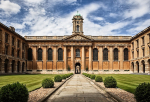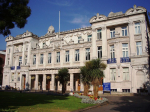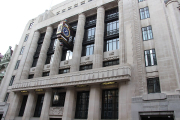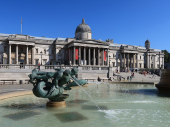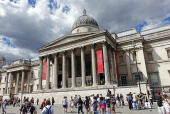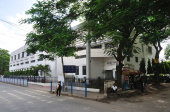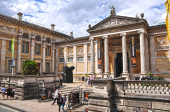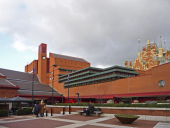
Chief Rabbi Sir Ephraim Mirvis has issued a direct appeal to protect the historic Bevis Marks Synagogue, highlighting the opposition of nearly 1,000 people to the
proposed construction of a 45-storey tower block nearby.
In a strongly-worded letter to the Lord Mayor of London, Alderman Professor Michael Raymond Mainelli, the Chief Rabbi expressed his disappointment at having to object again to the planning proposals submitted to the Corporation of the City of London. He had previously addressed his concerns to the former Lord Mayor, Alderman William Russell.
Bevis Marks, the oldest continuously used synagogue in Britain, faces a significant threat from the proposed development. Rabbi Mirvis emphasized that the new tower block could substantially reduce the natural light reaching the synagogue, disrupting both the interior prayers and the use of the courtyard. This impact, he argued, would degrade the unique atmosphere for which Bevis Marks is renowned within the global Jewish community.
Rabbi Mirvis's letter also pointed out the historical significance of Bevis Marks, where Jews first enjoyed religious rights in England following the 17th-century resettlement. He warned that approving the development would be a regrettable irony with adverse implications for religious practice rights.
This letter coincided with hundreds of public comments submitted to the City of London's planning committee, which sought input for its consultation process. As of May 21, over 1,000 comments had been recorded, with 986 opposing the development. Support for the project was minimal, with only 50 individuals expressing approval.
Objections came not only from Bevis Marks members but also from broader segments of the Jewish community concerned about the impact on the historic synagogue. Simon Rozas from north-west London noted the synagogue's historical significance comparable to the Portuguese Synagogue in Amsterdam and the Altneu Synagogue in Prague. He argued that no planning authority would consider erecting a high-rise near such landmarks, likening it to building near St Paul’s Cathedral or the Hagia Sophia.
Support for preserving Bevis Marks also extended internationally, with objections from Israel, America, and Mexico. Gaston Maya, president of the Latin American Sephardic Federation, representing 310,000 people, emphasized that the development proposal was incompatible with the Grade I listed status of the synagogue. He described Bevis Marks as a crucial site in English and world Jewish heritage, integral to the Sephardi tradition.
This campaign underscores the global and historical importance of Bevis Marks Synagogue and the widespread opposition to any development that threatens its integrity. Photo by John Salmon / Bevis Marks Synagogue / CC BY-SA 2.0, Wikimedia commons.













